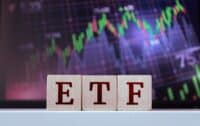
Here’s an eye-opening statistic: older Americans are more afraid of running out of money than of death itself.
And retirees have good reason to be worried about making their assets last. People are living longer, so that money has to cover a longer period. Making matters worse, income generated using tried-and-true retirement planning approaches may not cover expenses these days. That means seniors must dip into principal to meet living expenses.
Retirement investing approaches of the past don’t work today.
In the past, investors going into retirement could invest in bonds and count on attractive yields to produce steady, reliable income streams to fund a predictable retirement. 10-year Treasury bond rates in the late 1990s hovered around 6.50%, whereas the current rate is much lower.
That means if you had $1 million in 10-year Treasuries, the difference in yield between 1999 and today is more than $1 million.
And lower bond yields aren’t the only potential problem seniors are facing. Today’s retirees aren’t feeling as secure as they once did about Social Security, either. Benefit checks will still be coming for the foreseeable future, but based on current estimates, Social Security funds will run out of money in 2035.
Unfortunately, it looks like the two traditional sources of retirement income – bonds and Social Security – may not be able to adequately meet the needs of present and future retirees. But what if there was another option that could provide a steady, reliable source of income in retirement?
Invest in Dividend Stocks
As we see it, dividend-paying stocks from generally low-risk, top notch companies are a brilliant way to create steady and solid income streams to supplant low risk, low yielding Treasury and fixed-income alternatives.
Look for stocks that have paid steady, increasing dividends for years (or decades), and have not cut their dividends even during recessions.
One approach to recognizing appropriate stocks is to look for companies with an average dividend yield of 3% and positive average annual dividend growth. Numerous stocks hike dividends over time, counterbalancing inflation risks.
Here are three dividend-paying stocks retirees should consider for their nest egg portfolio.
Guess (GES) is currently shelling out a dividend of $0.3 per share, with a dividend yield of 5.03%. This compares to the Textile – Apparel industry’s yield of 0% and the S&P 500’s yield of 1.65%. The company’s annualized dividend growth in the past year was 33.33%. Check Guess (GES) dividend history here>>>
Interpublic Group (IPG) is paying out a dividend of $0.31 per share at the moment, with a dividend yield of 3.85% compared to the Advertising and Marketing industry’s yield of 0% and the S&P 500’s yield. The annualized dividend growth of the company was 6.9% over the past year. Check Interpublic Group (IPG) dividend history here>>>
Currently paying a dividend of $1.3 per share, M&T Bank Corporation (MTB) has a dividend yield of 4.2%. This is compared to the Banks – Major Regional industry’s yield of 4.2% and the S&P 500’s current yield. Annualized dividend growth for the company in the past year was 8.33%. Check M&T Bank Corporation (MTB) dividend history here>>>
But aren’t stocks generally more risky than bonds?
Overall, that is true. But stocks are a broad class, and you can reduce the risks significantly by selecting high-quality dividend stocks that can generate regular, predictable income and can also decrease the volatility of your portfolio compared to the overall stock market.
Combating the impact of inflation is one advantage of owning these dividend-paying stocks. Here’s why: many of these stable, high-quality companies increase their dividends over time, which translates to rising dividend income that offsets the effects of inflation.
Thinking about dividend-focused mutual funds or ETFs? Watch out for fees.
If you’re interested in investing in dividends, but are thinking about mutual funds or ETFs rather than stocks, beware of fees. Mutual funds and specialized ETFs may carry high fees, which could lower the overall gains you earn from dividends, undercutting your dividend income strategy. Be sure to look for funds with low fees if you decide on this approach.
Bottom Line
Pursuing a dividend investing strategy can help protect your retirement portfolio. Whether you choose to invest in stocks or through low-fee mutual funds or ETFs, this approach can potentially help you achieve a more secure and enjoyable retirement.
Guess?, Inc. (GES): Free Stock Analysis Report
M&T Bank Corporation (MTB): Free Stock Analysis Report
Interpublic Group of Companies, Inc. (The) (IPG): Free Stock Analysis Report
To read this article on Zacks.com click here.
This article originally appeared on Zacks
Get Ready To Retire (Sponsored)
Start by taking a quick retirement quiz from SmartAsset that will match you with up to 3 financial advisors that serve your area and beyond in 5 minutes, or less.
Each advisor has been vetted by SmartAsset and is held to a fiduciary standard to act in your best interests.
Here’s how it works:
1. Answer SmartAsset advisor match quiz
2. Review your pre-screened matches at your leisure. Check out the advisors’ profiles.
3. Speak with advisors at no cost to you. Have an introductory call on the phone or introduction in person and choose whom to work with in the future
Thank you for reading! Have some feedback for us?
Contact the 24/7 Wall St. editorial team.





